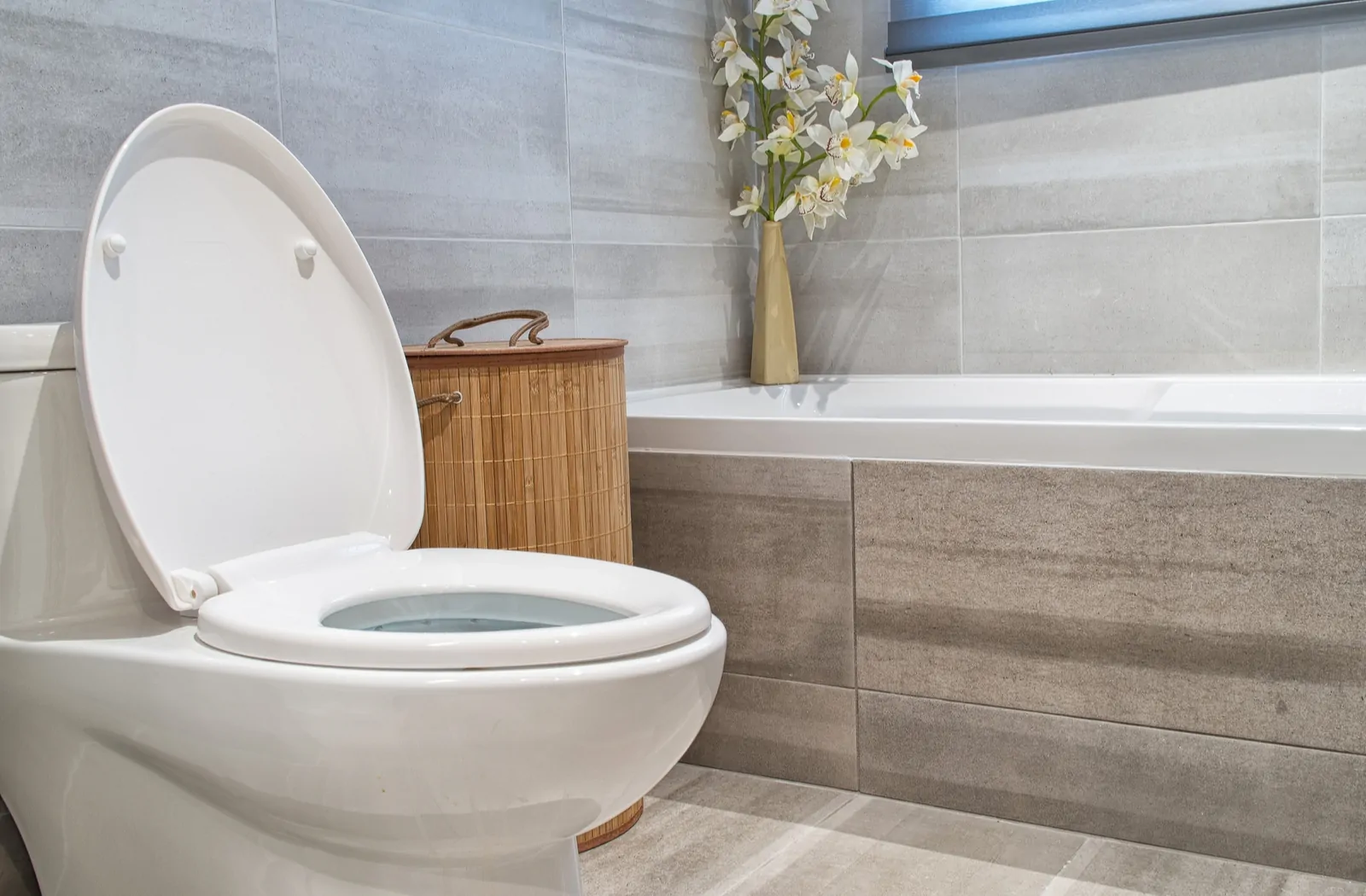We know, the headline is a great start to a bad joke, but a constantly running toilet isn’t always a laughing matter.
Toilets account for about 11% of your home’s water usage, and flushes can use up to 1.6 gallons of water (or up to 6 gallons with older toilets). However, if your toilet is constantly running, you could use up to 200 gallons of water a day or 6,000 gallons of water per month! Not only is this a hefty burden for your wallet to take on, but it’s also a massive waste of resources and terrible for the environment.
If you notice that your toilet is constantly running and you have no idea where to start, this blog will help you troubleshoot some common causes for this problem and provide you with some insight on how to fix it correctly. That being said, one of the best ways you can prevent plumbing issues like these is to have regular maintenance checks from our professional team.
Maintenance gets ahead of common plumbing issues, saving you the cost and headache of repairs and replacements. Book your next plumbing maintenance appointment with the professionals at Lee’s Air, Plumbing & Heating today!
If you want to learn how to fix a running toilet, this guide will walk you through the steps you can take to fix the problem at the source. So without wasting any more time, let’s discuss how to stop a toilet from running.
What Are the Most Common Signs of a Running Toilet?
It’s no secret that a running toilet is an inconvenient, frustrating issue to deal with as a homeowner. However, before we can discuss how to stop the toilet from running in your house, it’s important to know how to spot the warning signs.
Holding Down the Handle
When you flush the toilet, you shouldn’t have any trouble pressing down on the handle. So if you have to hold down the handle to ensure the toilet flushes completely, this is a telltale sign that the toilet won’t stop running.
Loud, Unusual Sounds
It’s normal for your toilet to make sounds as you flush it; this indicates that it’s working correctly. However, if the toilet is producing strange noises when not in use (like a hiss), this can indicate that it’s leaking internally. Paired with a high water bill, this clearly suggests that your toilet needs a new component installed or a repair.
Food Coloring Test
Do you want to know without a doubt that your toilet has an internal leak? If so, you can perform a food dye test to catch the leak in action. Simply remove the tank lid and place ten drops of food coloring into the tank. Then, let the food dye sit for 25 minutes without flushing the toilet. Don’t use the toilet during this time.
After waiting, you should check to see if the food coloring and water from the tank have made their way into the toilet bowl. This remaining water will indicate that there’s water flowing into the bowl when it shouldn’t.
How Do Issues Start?
Several issues may cause your toilet to keep running, but one of the most common is that the flapper chain is tangled or caught on something inside the tank. In this case, you may only need to jiggle the flush lever a little bit so that the flapper can seal the tank and fill it with water again.
However, if you’ve tried this and your toilet is still running, this could be indicative of another problem altogether:
The Float Height Is Too High
If your float height, determined by your fill valve, is above your overflow tube, your water supply won’t stop and your overflow tube will constantly leak water into your toilet bowl. When discussing how to stop the toilet from running in more detail below, we’ll go over how to adjust the height of the float.
Your Flapper Isn’t Stopping Water Flow
One of the most common issues that you can look for immediately is the quality of your flapper. Old, run-down flappers won’t seal after you flush your toilet, meaning that they will constantly leak water into your toilet bowl.
Your Refill Tube Is Too Long
Inside your toilet tank is a tube that refills your toilet bowl after you flush. This refill tube is connected to your fill valve and is placed inside your overflow tube to fill the toilet bowl. However, if the refill tube is too long, it can create a siphoning effect that could keep running water into your toilet bowl. If you think that you could be experiencing this particular issue, you’ll need to adjust the refill tube that runs into the overflow tube.
How Can You Fix These Issues?
It’s time to discuss how to stop the toilet from running once and for all! However, there are a few precautions you’ll want to take to ensure a smooth, worry-free repair process. Before you start working on correcting the issue inside your toilet tank, you’ll first need to drain the tank, shut off its water supply, and put on a pair of rubber gloves to keep your hands clean.
Now, let’s look at some solutions:
Adjusting Your Float Height
You can set the float height at certain levels by adjusting the fill valve height. After draining the tank, you’ll hold the float cup as high as it goes before you remove the cap assembly. Detach the refill tube, and you can twist the valve to the specific height you need so that the water level is lower than the overflow tube. You’ll be able to measure this by making sure the float cup is about half an inch lower than the overflow tube.
When learning how to stop a toilet from running, it’s important to note that not every situation will look the exact same. Depending on the type of toilet you have and how old it is, you may need to take extra steps to adjust the float height.
For example, if you have an older toilet, you’ll most likely need to bend the rod that links to the float ball. If you feel uncomfortable making these adjustments on your own, don’t hesitate to call a professional plumber for assistance.
Changing Your Flapper
Now that you know how to stop a toilet from running when adjusting the float height, it’s time to discuss the flapper. Flappers are rubber stoppers that sit in water all of the time, so it’s not surprising that they need to be replaced after a number of years.
To replace the flapper, all you’ll have to do is drain the toilet and unhook the flapper from where it’s attached to the overflow tube. After you drain and turn off the water to the toilet, you can look for any issues around the flush valve (the hole the flapper covers) to spot any underlying damage. Unhook the chain from the flush arm, and run the process backwards with a brand new flapper.
Unfortunately, if the flush valve chain is too short, you may need to replace the flush valve chain altogether.
Changing Your Fill Tube Length
A long refill tube can end up costing you much more money than they’re worth, so make sure they’re an appropriate length for your overflow tube. If you want to learn all there is to know about how to stop a toilet from running, you may need to adjust the fill tube’s length. The golden rule is to have it sit just inside the top of the overflow tube. Flush it once to make sure water stops flowing from the tube once the tank is full.
Replacing the Fill Valve
Finally, you may need to replace the fill valve if all other problems have been ruled out. Essentially, you’ll need to remove the water supply line and loosen the fill valve assembly that’s located at the bottom of the tank. Once you’ve done this, it will be time to take out the current fill valve assembly and replace it with the new one.
When Should You Call Our Team?
There you have it: You should have a better idea of how to stop the toilet from running in your house. Many of the above fixes are easy to make and only will take a few minutes of your time to get done.
However, what about the issues you can’t fix by yourself? While there are plenty of YouTube videos you can search for that’ll provide some quick tricks and tips, nothing beats the expertise of a trained professional. Whether you’re dealing with tank leaks at the bottom or faulty components that are hard to pinpoint, an experienced contractor will help you find the right solution for the problem.
If you continue to experience problems with your toilet or plumbing and you’ve tried all of the fixes above, call the team at Lee’s Air, Plumbing, and Heating! We’ve spent years providing quality fixes for both residential and commercial plumbing issues, and we’re ready to bring the same help to you today. Our professional plumbers are happy to assist with all of your needs, from comprehensive replacement to drain cleaning in Fresno, CA.
So don’t wait to reach out to us to schedule an appointment. We guarantee that you’ll have a five-star experience with our team of experts on the job. See what we can do for you, and contact us for everything for your repairs, installations, or leak detection in Fresno today!



